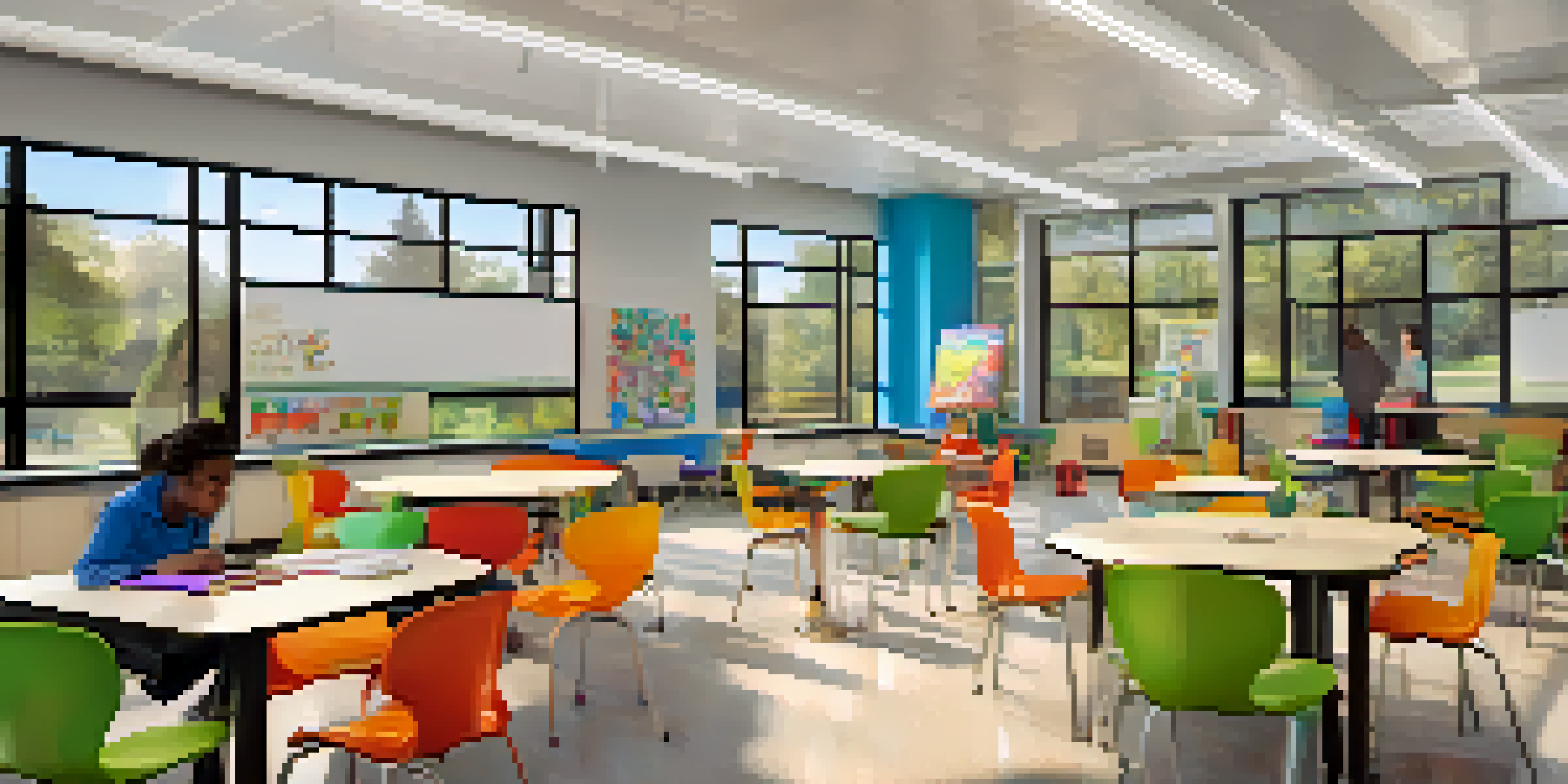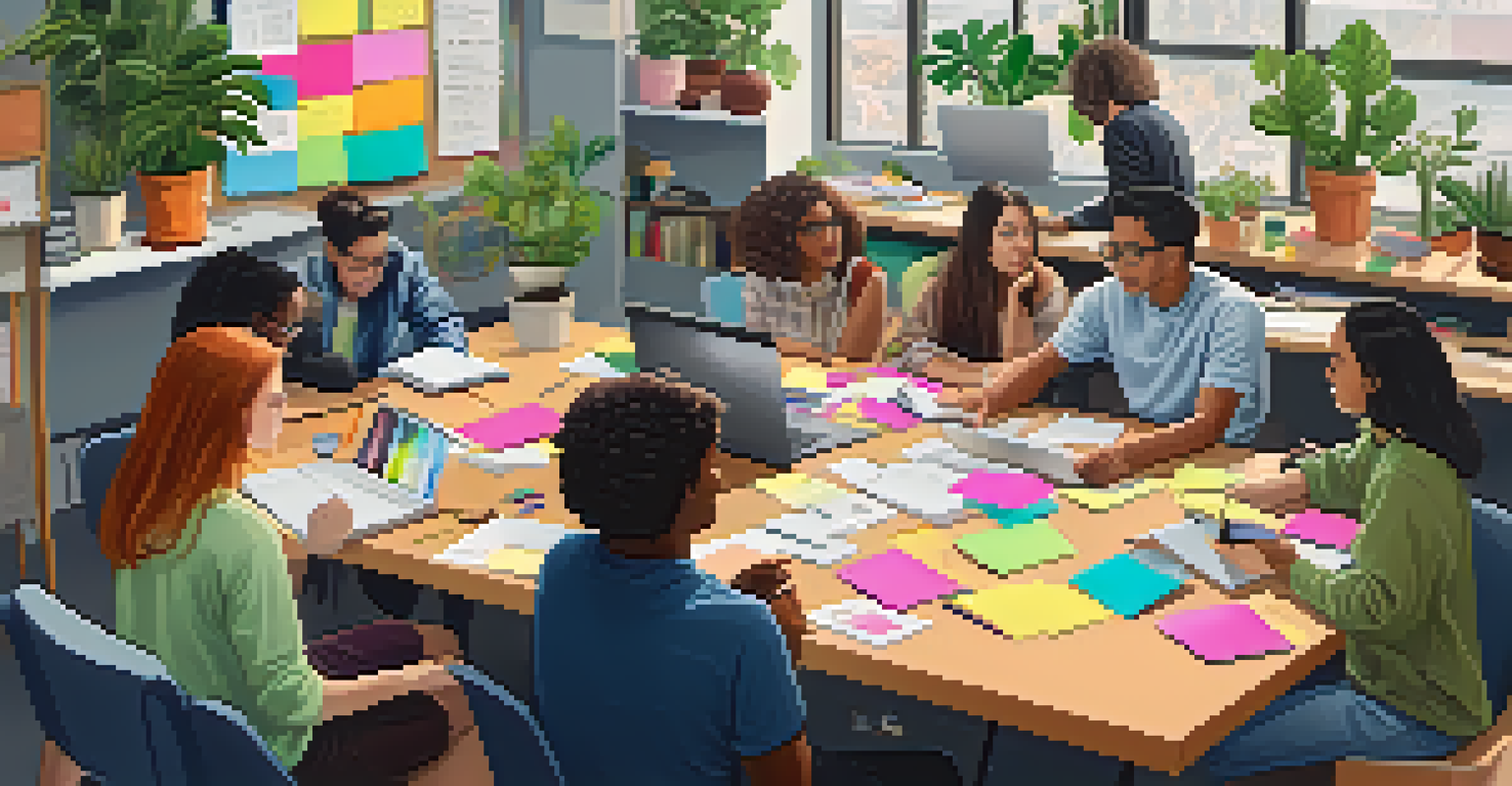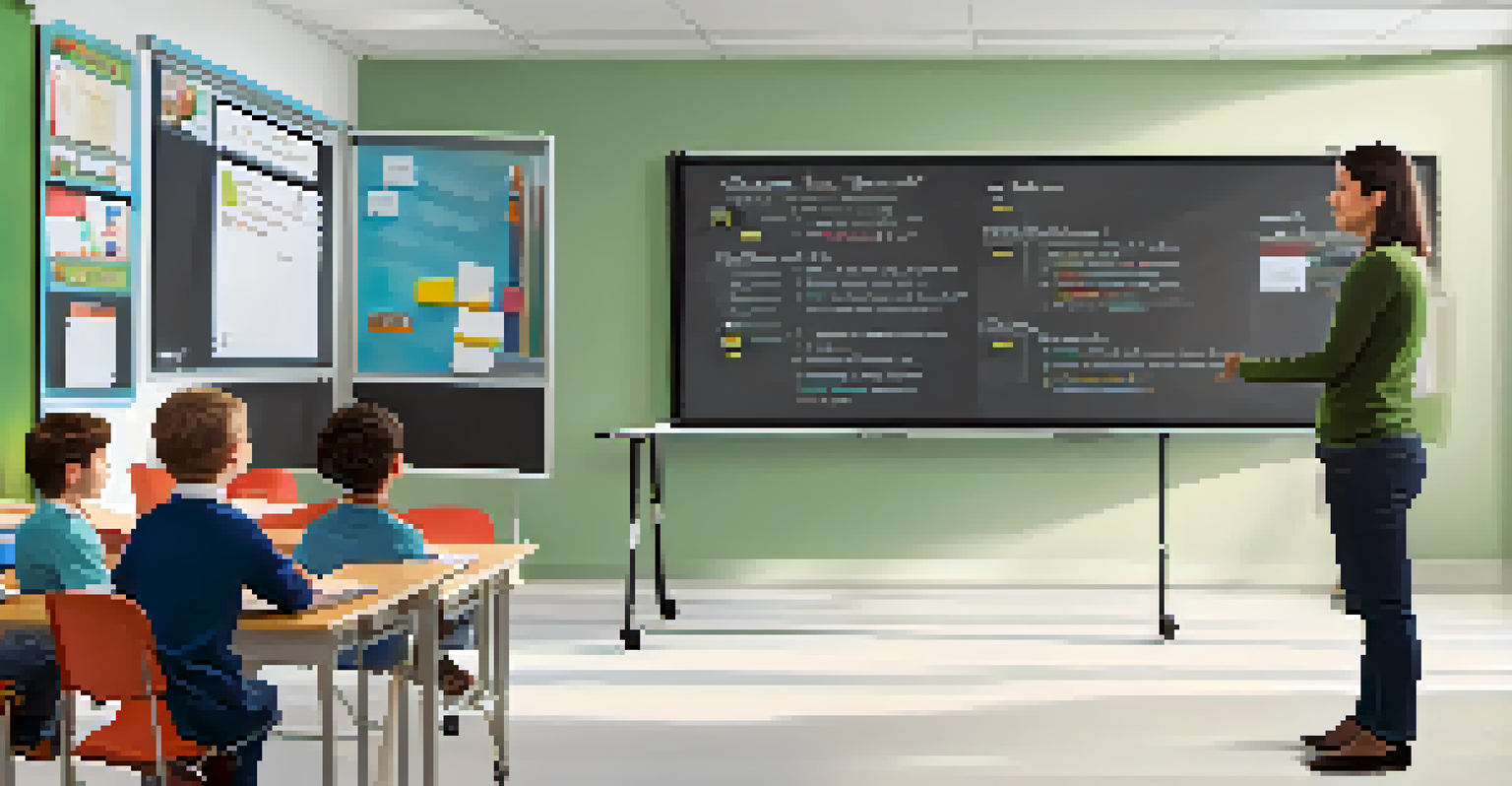Creating a Culture of Innovation in Learning Spaces

Understanding the Importance of Innovation in Learning
Innovation in learning spaces is essential for fostering creativity and critical thinking among students. It encourages learners to explore new ideas and approaches, which can lead to more effective problem-solving skills. Moreover, an innovative environment can adapt to the changing needs of students and the demands of a dynamic job market.
Innovation distinguishes between a leader and a follower.
When students are engaged in innovative learning experiences, they are more likely to retain information and apply it in real-world situations. This experiential learning approach not only makes education more enjoyable but also prepares students for future challenges. In essence, innovation transforms traditional learning into an active, participatory process.
Creating a culture of innovation means shifting the focus from rote memorization to exploration and experimentation. By valuing creativity and encouraging risk-taking, educators can help students develop a growth mindset. This shift is vital for cultivating lifelong learners who are equipped to navigate an ever-evolving world.
Designing Flexible Learning Environments
Flexibility in learning spaces is crucial for promoting innovation. Traditional classrooms often limit collaboration and creativity due to fixed seating and rigid layouts. By designing spaces that are adaptable and can be easily reconfigured, educators can foster a more dynamic learning environment.

Incorporating movable furniture, diverse seating areas, and collaborative zones encourages students to work together and share ideas. These flexible spaces also allow for various teaching styles, from lectures to group projects, catering to different learning preferences. When students feel comfortable and empowered in their environment, they are more likely to engage and innovate.
Innovation Enhances Learning Engagement
Innovative learning environments foster creativity and critical thinking, making education more enjoyable and effective for students.
Additionally, integrating technology into these flexible spaces can further enhance the learning experience. Access to digital tools and resources enables students to explore and create in ways that were previously unimaginable. This combination of physical and digital flexibility paves the way for a truly innovative learning culture.
Encouraging a Growth Mindset Among Students
A growth mindset is the belief that abilities and intelligence can be developed through dedication and hard work. Encouraging this mindset in students is vital for creating a culture of innovation. When students view challenges as opportunities for growth, they become more resilient and open to new ideas.
The greatest danger in times of turbulence is not the turbulence; it is to act with yesterday's logic.
Educators can foster a growth mindset by providing constructive feedback, celebrating effort over results, and modeling perseverance. Sharing stories of famous innovators who faced failures but ultimately succeeded can inspire students to embrace challenges. This narrative approach makes the concept of innovation relatable and achievable.
Creating a safe space for experimentation also supports a growth mindset. When students feel comfortable taking risks without the fear of failure, they are more likely to pursue creative solutions. Ultimately, this environment nurtures innovation and empowers students to think outside the box.
Fostering Collaboration and Teamwork
Collaboration is at the heart of innovation. When students work together, they bring diverse perspectives and ideas, leading to more creative solutions. Facilitating group projects and collaborative activities encourages teamwork and helps students develop essential interpersonal skills.
Incorporating collaborative technologies, such as online platforms and tools, can enhance this experience. These resources allow students to connect and share ideas seamlessly, regardless of physical location. Emphasizing collaboration not only enhances learning outcomes but also prepares students for future workplaces where teamwork is often crucial.
Collaboration Drives Creative Solutions
Encouraging teamwork and collaboration among students leads to diverse perspectives, resulting in more innovative problem-solving.
Moreover, fostering a collaborative culture within learning spaces builds a sense of community. When students feel part of a team, they are more likely to contribute and support each other’s learning journeys. This camaraderie enhances overall engagement and motivation, further driving innovation.
Integrating Real-World Problems into Learning
One of the best ways to spark innovation is by connecting education to real-world problems. When students tackle authentic challenges, they can see the relevance of their learning and are motivated to find innovative solutions. This approach not only enhances engagement but also prepares students for future challenges they may face in their careers.
Project-based learning is an effective method for integrating real-world problems into the curriculum. By allowing students to work on projects that have a tangible impact, they develop critical thinking and problem-solving skills. This experiential learning model encourages students to apply their knowledge in practical situations, fostering a deeper understanding of the subject matter.
Additionally, collaborating with local businesses or organizations can provide students with valuable insights and resources. These partnerships can lead to mentorship opportunities and provide students with a glimpse into potential career paths. Ultimately, this connection between education and the real world cultivates a culture of innovation.
Empowering Educators as Innovators
Educators play a crucial role in fostering a culture of innovation within learning spaces. When teachers feel empowered to experiment with new teaching methods and technologies, they can inspire their students to do the same. Professional development opportunities that focus on innovative practices can equip educators with the skills and confidence they need.
Creating a supportive environment where educators can share their successes and failures encourages a culture of continuous improvement. Regularly exchanging ideas and resources among peers fosters collaboration among teachers, leading to the development of innovative teaching strategies. This collaborative spirit ultimately benefits students as well.
Real-World Problems Foster Relevance
Integrating real-world challenges into education enhances student engagement and prepares them for future career demands.
Moreover, encouraging educators to pursue their passions and interests can lead to more engaging lessons. When teachers are enthusiastic about their subjects, this energy translates to their students, sparking curiosity and innovation. Empowering educators sets the foundation for a thriving culture of innovation.
Measuring the Impact of Innovation in Learning Spaces
To create a culture of innovation effectively, it’s essential to measure its impact on learning outcomes. Collecting data on student engagement, academic performance, and overall satisfaction can provide valuable insights. These metrics help educators understand what strategies are working and where improvements are needed.
Utilizing surveys, assessments, and feedback from students can help gauge the effectiveness of innovative practices. This ongoing evaluation process ensures that learning environments are continuously evolving to meet the needs of students. Moreover, sharing these findings with the broader educational community can foster collaboration and inspire other institutions to adopt innovative practices.

Ultimately, measuring the impact of innovation not only validates the efforts made but also highlights success stories. Celebrating these achievements motivates both educators and students to continue pushing boundaries and exploring new possibilities. This cycle of evaluation and celebration is key to sustaining a culture of innovation in learning spaces.